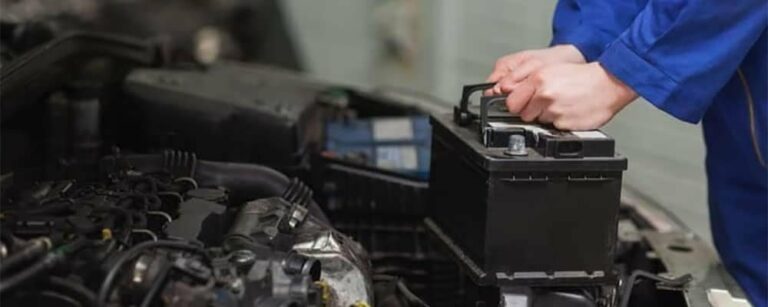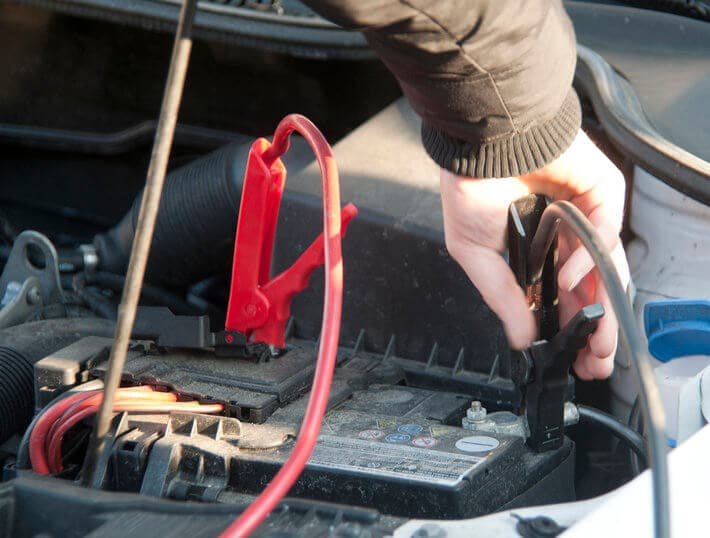Simple Steps: How To Charge A Car Battery With The Car Alternator
Looking for a way to charge your car battery using a car alternator? You’ve come to the right place. In this article, we will walk you through the simple and effective method of using your car’s alternator to charge a dead or weak battery. No need for complicated tools or expensive equipment – just a few simple steps and you’ll have a fully charged battery in no time. So, wondering how to charge a car battery using a car alternator? Let’s dive in and find out!
How to Charge a Car Battery Using a Car Alternator
In today’s fast-paced world, owning a car has become a necessity for many people. However, one of the biggest challenges that car owners face is a dead car battery. This can happen unexpectedly, leaving you stranded and in need of a jump-start. While there are various methods to charge a car battery, one effective and convenient way is to use the car’s alternator. In this article, we will explore the step-by-step process of charging a car battery using a car alternator and discuss the precautions and tips to ensure a successful charging session.
Understanding the Car Alternator
The alternator plays a crucial role in a car’s electrical system. It is responsible for generating electricity to power the various electrical components in the vehicle and recharge the battery. Before learning how to charge a car battery using the alternator, it’s important to have a basic understanding of how it works.
The alternator is driven by the engine’s serpentine belt and consists of three main components: a rotor, stator, and diodes. When the engine is running, the rotation of the crankshaft drives the rotor, creating a magnetic field. The stator, which is stationary, has wire windings that are exposed to the rotor’s magnetic field. As the rotor spins, it induces an alternating current (AC) in the stator windings. The diodes within the alternator convert the AC into direct current (DC), which is the type of current used to charge the battery.
Precautions Before Charging the Car Battery
Before attempting to charge a car battery using the alternator, it’s important to take some precautions to ensure safety and prevent any damage to the car’s electrical system. Here are some essential steps to follow:
1. Park in a well-ventilated area: Make sure you are in an open and well-ventilated space to avoid inhaling any harmful gases that may be emitted during the charging process.
2. Turn off the engine: Before connecting or disconnecting any wires, always turn off the engine and remove the keys from the ignition to prevent accidental starting.
3. Wear safety gear: To protect yourself, it is recommended to wear safety glasses and gloves while working on the car’s electrical system.
4. Disconnect electrical accessories: To avoid any risk of damage, disconnect all electrical accessories such as lights, radio, and air conditioning before charging the battery.
Required Tools and Equipment
To charge a car battery using the car alternator, you will need a few tools and equipment. Here’s a list of the essential items you should gather before starting the process:
1. Safety glasses
2. Gloves
3. Battery charger or voltmeter
4. Wrench or socket set
5. Jumper cables
6. Battery terminal cleaner or brush
7. Distilled water (if necessary)
8. Funnel (if necessary)
Checking the Battery Voltage
Before proceeding with the charging process, it’s important to determine the current voltage of the car battery. This will help you assess the level of charge and decide whether the battery needs a full recharge or if a quick top-up will suffice.
To check the battery voltage, follow these steps:
1. Open the car’s hood and locate the battery.
2. Put on your safety glasses and gloves for protection.
3. Using a wrench or socket set, remove the battery terminal connections. Start with the negative (-) terminal followed by the positive (+) terminal.
4. Connect the voltmeter’s positive probe to the positive battery terminal and the negative probe to the negative battery terminal.
5. Read the voltage displayed on the voltmeter. A fully charged battery typically reads around 12.6 volts. If the voltage is significantly lower, it indicates a discharged battery.
Connecting the Jumper Cables
Once you have determined that the battery needs to be charged, you can proceed with connecting the jumper cables to the car’s alternator. Follow these steps:
1. Park the working vehicle near the car with the dead battery, making sure both vehicles are turned off.
2. Open both vehicle hoods and locate the batteries.
3. Put on your safety glasses and gloves for protection.
4. Identify the positive (+) and negative (-) terminals of both batteries. They are usually marked with red (+) and black (-) indicators.
5. Connect one end of the positive jumper cable to the positive (+) terminal of the working battery.
6. Connect the other end of the positive jumper cable to the positive (+) terminal of the dead battery.
7. Connect one end of the negative jumper cable to the negative (-) terminal of the working battery.
8. Connect the other end of the negative jumper cable to a metal, unpainted part of the car’s engine block. This serves as the grounding point for the electrical circuit.
Charging the Car Battery
Now that the jumper cables are properly connected, it’s time to charge the car battery using the alternator. Follow these steps:
1. Start the engine of the working vehicle and let it idle for a few minutes.
2. Start the engine of the car with the dead battery.
3. Allow both engines to run for about 5 to 10 minutes to transfer the charge from the working vehicle’s alternator to the dead battery.
4. Monitor the voltage of the dead battery using a voltmeter. The ideal charging voltage range is between 13.8 to 14.4 volts.
5. Once the dead battery’s voltage reaches a satisfactory level, you can turn off both engines.
Disconnecting the Jumper Cables
After successfully charging the car battery, it’s important to disconnect the jumper cables properly. Follow these steps:
1. Turn off the engines of both vehicles.
2. Remove the negative (-) jumper cable from the engine block of the car with the dead battery.
3. Remove the negative (-) jumper cable from the negative (-) terminal of the working battery.
4. Remove the positive (+) jumper cable from the positive (+) terminal of the dead battery.
5. Finally, remove the positive (+) jumper cable from the positive (+) terminal of the working battery.
Testing the Battery Charge
To ensure that the battery has been properly charged, it’s recommended to perform a battery load test. This will help determine if the battery can hold a charge and if there are any underlying issues with its capacity or performance.
A battery load test can be carried out using a battery load tester or by visiting a professional auto repair shop. This test applies a load to the battery and checks how well it maintains voltage under stress.
Section 9: Maintenance Tips to Prolong Battery Life
To prolong the life of your car battery and prevent future dead battery situations, it’s important to follow some maintenance tips. Here are a few recommendations:
1. Keep the battery clean: Regularly clean the battery terminals and cables to prevent corrosion buildup.
2. Avoid excessive drain: Minimize the use of electrical accessories when the engine is off to prevent excessive drain on the battery.
3. Check the electrolyte levels: If your battery requires maintenance, check the electrolyte levels regularly and top up with distilled water if necessary.
4. Drive regularly: Frequent driving helps maintain the charge of the battery, as the alternator recharges it while the engine runs.
5. Test the battery regularly: Periodically check the battery voltage or get it tested by a professional to ensure it is holding a charge.
12v gas alternator generator battery charger
Frequently Asked Questions
Can a car alternator charge a car battery?
Yes, a car alternator can charge a car battery. The alternator is designed to generate electricity while the engine is running, and it is connected to the car battery through a charging system. When the engine runs, the alternator produces electrical power and replenishes the battery’s charge.
How long does it take for a car alternator to charge a car battery?
The time it takes for a car alternator to charge a car battery depends on several factors, such as the alternator’s capacity and the state of the battery’s charge. On average, it can take approximately 30 minutes to a few hours for the alternator to fully charge a car battery.
What should I do if my car battery is dead?
If your car battery is dead, you can try jump-starting it using another vehicle or charging it using a car alternator. To charge the battery using the alternator, start the engine and let it run for a while. The alternator will then generate electricity to recharge the battery.
Can I charge a car battery by revving the engine?
Revving the engine can help increase the charging rate of the alternator, but it is not recommended as a primary method to charge a car battery. It is more effective to let the engine run at a steady speed for an extended period to allow the alternator to properly charge the battery.
Can I charge a car battery while the engine is off?
No, you cannot charge a car battery using the car alternator while the engine is off. The alternator relies on the engine’s mechanical energy to produce electricity, so it needs the engine running in order to charge the battery.
Is it possible to overcharge a car battery using a car alternator?
It is unlikely to overcharge a car battery using a car alternator because the charging system is designed to regulate the charge. However, it is essential to monitor the battery’s voltage and charging process to prevent any potential damage or excessive wear on the battery or alternator.
Final Thoughts
Charging a car battery using a car alternator is a practical and efficient method to ensure its proper functioning. By allowing the alternator to generate electricity when the engine is running, the battery gets charged. This process involves connecting the positive and negative terminals of the alternator to the corresponding terminals of the battery, completing the circuit. Regularly charging the car battery using the car alternator can prevent it from losing charge and extend its lifespan. Understanding how to charge a car battery using a car alternator is essential for every car owner to maintain their battery’s health and avoid unexpected breakdowns.



